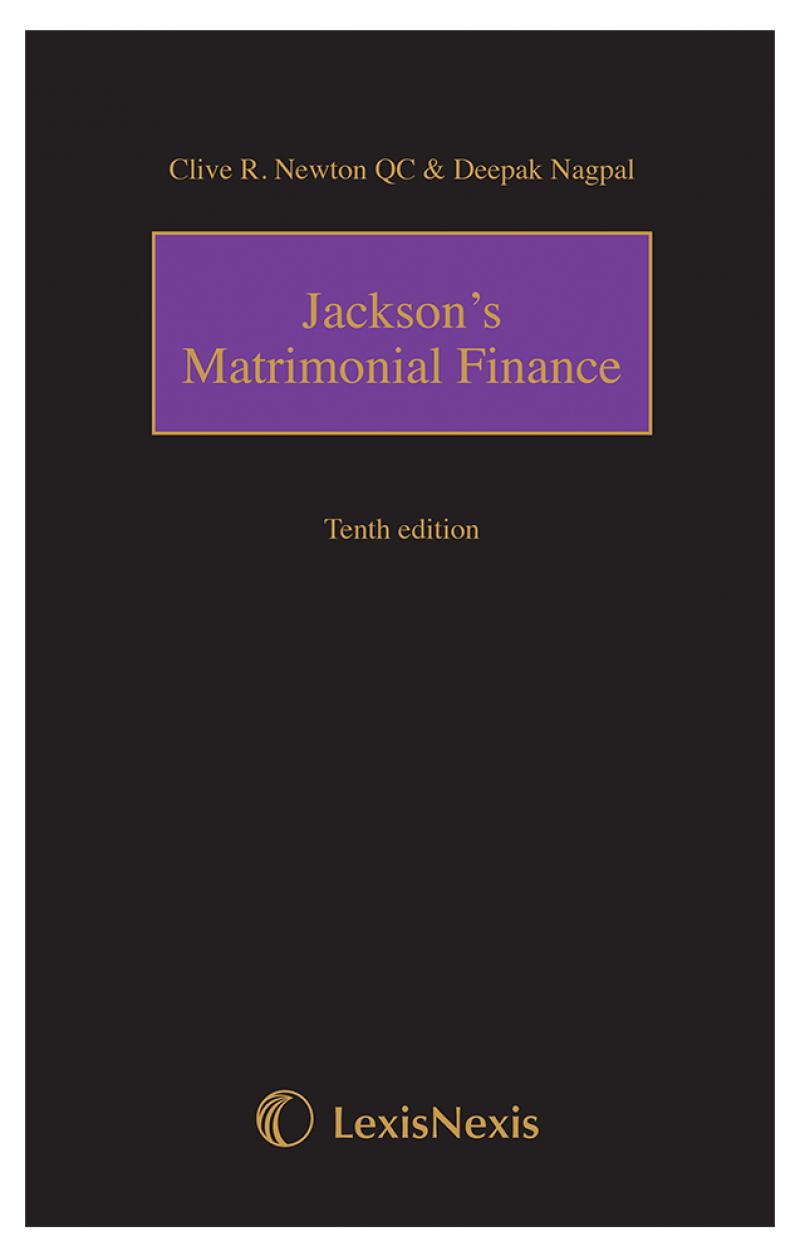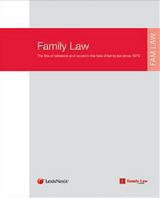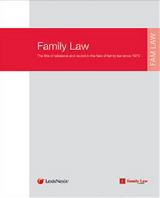- News & Comment
-
Online Shop
Online Services
Looseleafs
Law Reports
Books and eBooks
-
CPD & Events
Webinars
Events
- Authors
- About Family Law
- Contact












 31 MAR 2025
31 MAR 2025

 31 MAR 2025
31 MAR 2025

 31 MAR 2025
31 MAR 2025

 31 MAR 2025
31 MAR 2025

 31 MAR 2025
31 MAR 2025







New legislation nicknamed the Cinderella Law, which looks set to become enacted in the near future, could have significant ramifications upon the practice of family law. If passed, it would become a criminal offence for parents or carers to harm a child's 'physical, intellectual, emotional, social or behavioural development'. It is expected to encompass all forms of child abuse including children suffering from a lack of love at home, children who witness domestic violence and those that have been humiliated by a parent or carer. If found guilty, adults could face up to 10 years in prison - the current maximum sentence in child neglect cases.
If the law is indeed enacted, the new measures could be added to the Children and Young Persons Act 1933, or could be enshrined in a separate Act created specifically to implement the proposed changes. Action for Children have expressed the desire to have s 1 of the Children and Young Persons Act repealed and replaced with the Cinderella Law which offers a new definition of child abuse:
's 1 Child maltreatment
(1) It is an offence for a person who has attained the age of 16 years with responsibility for a child intentionally or recklessly to subject that child or allow that child to be subjected to maltreatment, whether by act or omission, such that the child suffers, or is likely to suffer, significant harm.
(2) For the purposes of this section:
(a) ‘recklessly' shall mean that a person with responsibility for a child foresaw a risk that an act or omission regarding that child would be likely to result in significant harm, but nonetheless unreasonably took that risk;
(b) ‘responsibility' shall be as defined in section 17;24
(c) ‘maltreatment' includes:
(i) neglect (including abandonment),
(ii) physical abuse,
(iii) sexual abuse,
(iv) exploitation, and
(v) emotional abuse;
(d) ‘harm' means the impairment of:25
(i) physical or mental health, or
(ii) physical, intellectual, emotional, social or behavioural development.
(3) Where the question of whether harm suffered by a child is significant turns on the child's health or development, that child's health or development shall be compared with that which could reasonably be expected of a similar child.'
The origins of this new development can be traced back to 2012, when charity Action for Children began a campaign to amend the Children and Young Persons Act so that damage to a child's emotional needs could be made a criminal offence. The intention was to extend the criminal definition of child neglect to include emotional abuse as well as physical abuse. The proposal however, was not well received by the Government at the time, which felt that sufficient measures to protect children were already in place. As a result, Baroness Butler Sloss also tried to push the measures through last year, without success. A final attempt by Liberal Democrat Mark Williams MP, in the form of a Private Members Bill to bring in the changes also failed. Mr Williams' Child Maltreatment Bill never made it past its first reading in the House of Commons.
So, how did these measures come back to life, with the potential to impact upon child protection cases in the future, and what consequences might this have for already existing family legislation and practice?
Much of the groundwork for the Cinderella Law in the last few months has been carried out by justice minister Damien Green through a consultation to help gather supporting data for the new measures. Action for Children has also played a significant role, gathering experts which they selected, to create the draft legislation. This draft legislation has been amended and looks to be the same in content as the Child Maltreatment Bill (albeit slightly modified) which was rejected by Parliament earlier this year.
One of the driving forces for a change in the law by some family judges and lawyers was a desire to modernise The Children and Young Persons Act, to simplify the language used and to clarify certain terms that had caused confusion in the past. One such term was 'wilful neglect'. Research indicated that the word was often misunderstood and created difficulties in securing convictions, so the term has since been replaced with 'recklesness'. Another incentive for changing the criminal law in this area was to bring it in line with family law's current working definition of child abuse found in the Children Act 1989. The Cinderella Law clearly seeks to use the same terminology, as evidenced by the implementation of the term 'significant harm'. There is also the familiar use of the phrase, 'such that the child suffers or is likely to suffer (significant harm)'.
On the surface, it appears as if criminal law is being offered the opportunity to streamline with its civil counterpart on the issue of child abuse, which is a welcome step forward. However, it also throws into sharp relief the different evidential and standard of proof thresholds civil and criminal courts apply to child protection cases. If the new law does come into force, we will have almost identical legislation relating to the concept of risk of harm, but with differing thresholds at play and of equal significance, very different case law to be applied to each. As a civil court, the much-anticipated Single Family Court due to debut later this month, will apply a civil burden of proof: the evidence rests on a balance of probabilities. A criminal court handling child protection under potentially new measures criminalising emotional and physical abuse will use a different standard altogether: the requirement that guilt be established beyond a reasonable doubt. This may in time cause further complications in family law cases as the distinctions between the two courts become blurred.
Defining a precise threshold for significant harm too, may become an issue particularly for our criminal courts.
Lady Hale, giving her judgment in Re B (Care Proceedings: Appeal) [2013] UKSC 33, [2012] 2 FLR 1075 clarifies the family law definition of risk of significant harm eloquently. Baroness Hale explains that significant harm must be 'considerable, noteworthy or important,' that it should be attributable to 'a lack or likely lack of reasonable parental care, not simply to the characters and personalities of both the child and her parent,' and finally: 'where harm has not yet been suffered, the degree of likelihood that it will be suffered in the future must be considered.'
Significant harm in family cases has throughout its history, and despite further attempts at clarification, still managed to cause confusion as to its exact definition, and it is worthy of note that family judges and other legal experts continue to smooth the definition out and refine it, more than 25 years after the term was first introduced. How the criminal sector will tackle the challenges this definition brings, which has been borrowed to create this Cinderella Law, is yet to be seen.
Nevertheless, there can be no doubt that should emotional abuse as defined in the current draft become part of the criminal sector's working stance on child abuse, there will be several poignant and urgent kinks that will need to be ironed out, fast. Without a clear working definition of significant harm backed up by policy and expert guidance, the criminal courts may face an even greater challenge protecting at-risk children than our family courts do at present, and this in turn may place even greater numbers of children at risk of harm.
Natasha is a non-practicing barrister and Editor in Chief of The Encyclopaedia on Family and The Law. Natasha also runs the family law project, Researching Reform, which is dedicated to child welfare inside the family justice system. She is the Consultant for the All Party Parliamentary Group on Family Law and The Court of Protection.
Natasha can be contacted via Twitter @SobukiRa.
The views expressed by contributing authors are not necessarily those of Family Law or Jordan Publishing and should not be considered as legal advice.



